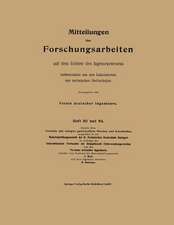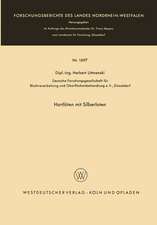Landmarking and Segmentation of 3D CT Images: Synthesis Lectures on Biomedical Engineering
Autor Shantanu Banik, Rangaraj Rangayyan, Graham Boagen Limba Engleză Paperback – 18 mar 2009
Din seria Synthesis Lectures on Biomedical Engineering
- 17%
 Preț: 362.03 lei
Preț: 362.03 lei - 15%
 Preț: 522.24 lei
Preț: 522.24 lei - 5%
 Preț: 364.74 lei
Preț: 364.74 lei - 5%
 Preț: 525.89 lei
Preț: 525.89 lei - 15%
 Preț: 636.80 lei
Preț: 636.80 lei -
 Preț: 382.95 lei
Preț: 382.95 lei -
 Preț: 268.83 lei
Preț: 268.83 lei -
 Preț: 260.77 lei
Preț: 260.77 lei -
 Preț: 266.32 lei
Preț: 266.32 lei -
 Preț: 262.47 lei
Preț: 262.47 lei -
 Preț: 204.76 lei
Preț: 204.76 lei -
 Preț: 268.66 lei
Preț: 268.66 lei -
 Preț: 262.47 lei
Preț: 262.47 lei -
 Preț: 206.84 lei
Preț: 206.84 lei -
 Preț: 321.54 lei
Preț: 321.54 lei -
 Preț: 192.05 lei
Preț: 192.05 lei -
 Preț: 261.32 lei
Preț: 261.32 lei -
 Preț: 261.53 lei
Preț: 261.53 lei -
 Preț: 206.84 lei
Preț: 206.84 lei -
 Preț: 349.36 lei
Preț: 349.36 lei -
 Preț: 260.95 lei
Preț: 260.95 lei -
 Preț: 204.76 lei
Preț: 204.76 lei -
 Preț: 391.02 lei
Preț: 391.02 lei -
 Preț: 268.83 lei
Preț: 268.83 lei -
 Preț: 205.92 lei
Preț: 205.92 lei -
 Preț: 382.57 lei
Preț: 382.57 lei -
 Preț: 346.48 lei
Preț: 346.48 lei -
 Preț: 264.41 lei
Preț: 264.41 lei -
 Preț: 384.48 lei
Preț: 384.48 lei -
 Preț: 259.04 lei
Preț: 259.04 lei -
 Preț: 260.95 lei
Preț: 260.95 lei -
 Preț: 261.32 lei
Preț: 261.32 lei -
 Preț: 158.66 lei
Preț: 158.66 lei -
 Preț: 267.86 lei
Preț: 267.86 lei -
 Preț: 207.65 lei
Preț: 207.65 lei -
 Preț: 205.92 lei
Preț: 205.92 lei -
 Preț: 268.66 lei
Preț: 268.66 lei -
 Preț: 322.31 lei
Preț: 322.31 lei -
 Preț: 205.70 lei
Preț: 205.70 lei -
 Preț: 226.22 lei
Preț: 226.22 lei - 15%
 Preț: 404.48 lei
Preț: 404.48 lei -
 Preț: 263.28 lei
Preț: 263.28 lei -
 Preț: 383.71 lei
Preț: 383.71 lei -
 Preț: 273.45 lei
Preț: 273.45 lei -
 Preț: 207.06 lei
Preț: 207.06 lei -
 Preț: 263.06 lei
Preț: 263.06 lei -
 Preț: 260.77 lei
Preț: 260.77 lei -
 Preț: 205.33 lei
Preț: 205.33 lei
Preț: 265.18 lei
Nou
Puncte Express: 398
Preț estimativ în valută:
50.75€ • 52.79$ • 41.90£
50.75€ • 52.79$ • 41.90£
Carte tipărită la comandă
Livrare economică 15-29 aprilie
Preluare comenzi: 021 569.72.76
Specificații
ISBN-13: 9783031005077
ISBN-10: 3031005074
Ilustrații: XXII, 148 p.
Dimensiuni: 191 x 235 mm
Greutate: 0.3 kg
Editura: Springer International Publishing
Colecția Springer
Seria Synthesis Lectures on Biomedical Engineering
Locul publicării:Cham, Switzerland
ISBN-10: 3031005074
Ilustrații: XXII, 148 p.
Dimensiuni: 191 x 235 mm
Greutate: 0.3 kg
Editura: Springer International Publishing
Colecția Springer
Seria Synthesis Lectures on Biomedical Engineering
Locul publicării:Cham, Switzerland
Cuprins
Introduction to Medical Image Analysis.- Image Segmentation.- Experimental Design and Database.- Ribs, Vertebral Column, and Spinal Canal.- Delineation of the Diaphragm.- Delineation of the Pelvic Girdle.- Application of Landmarking.- Concluding Remarks.
Notă biografică
Shantanu Banik received his Ph.D. in 2011 and M.Sc. in 2008 from the Department of Elec[1]trical and Computer Engineering, University of Calgary, Calgary, Alberta, Canada, and his B.Sc. in 2005 in Electrical and Electronic Engineering from the Bangladesh University of Engineering and Technology (BUET), Dhaka, Bangladesh. His Ph.D. thesis was on the problem of detection of architectural distortion in prior mammograms to aid the process of early detection of breast cancer. His research interests include medical signal and image processing and analysis, development of computer-aided diagnosis (CAD) techniques for the detection of cancer, landmarking and segmen[1]tation of medical images, pattern recognition and classification, medical imaging, and automatic segmentation and analysis of tumors. He has coauthored several journal papers, a number of con[1]ference papers, three book chapters, and a book titled Landmarking and Segmentation of 3D CT Images (Morgan & Claypool, 2009). He is currently writing two more books on image processing and biomedical applications. He received many awards and scholarships as a graduate student at the University of Calgary, including the Institute of Cancer Research (ICR), Canada Publication Prize for significant contribution on cancer research; Natural Sciences and Engineering Research Council (NSERC) of Canada and Collaborative Research and Training Experience (CREATE) postdoctoral fellowship; J. B. Hyne Research Innovation Award for outstanding research activity at the University of Calgary; Robert B. Paugh Memorial Award; Graduate Student Productivity Award; the Queen Elizabeth II Graduate (Doctoral) Scholarship; the Graduate Faculty Council Scholarship (Doc[1]toral); the University Technologies International Inc. (UTI) Fellowship; the University of Calgary Alumni Association Graduate Scholarship; and the Schulich School of Engineering Teaching As[1]sistant Excellence Award. He is currently working as a Research and Developement Engineer at the Circle Cardiovascular Imaging, Calgary, Alberta, Canada. Rangaraj Mandayam Rangayyan is a Professor with the Department of Electrical and Computer Engineering, and an Adjunct Professor of Surgery and Radiology, at the University of Calgary, Calgary, Alberta, Canada. He received a Bachelor of Engineering degree in Electronics and Communication in 1976 from the University of Mysore at the People’s Education Society College of Engineering, Mandya, Karnataka, India, and a Ph.D. in Electrical Engineering from the Indian Institute of Science, Bangalore, Karnataka, India, in 1980. His research interests are in the areas of digital signal and image processing, biomedical signal analysis, biomedical image analysis, and computer-aided diagnosis. He has published more than 150 papers in journals and 250 papers in proceedings of conferences. His research productivity was recognized with the 1997 and 2001 Research Excellence Awards of the Department of Electrical and Computer Engineering, the 1997 Research Award of the Faculty of Engineering, and by appointment as a “University Professor” in 2003, at the University of Calgary. He is the author of two textbooks: Biomedical Signal Analysis (IEEE/ Wiley, 2002) and Biomedical Image Analysis (CRC, 2005). He has coauthored and coedited several other books, including Color Image Processing with Biomedical Applications (SPIE, 2011). He was recognized by the IEEE with the award of the Third Millennium Medal in 2000, and was elected as a Fellow of the IEEE in 2001, Fellow of the Engineering Institute of Canada in 2002, Fellow of the American Institute for Medical and Biological Engineering in 2003, Fellow of SPIE: the International Society for Optical Engineering in 2003, Fellow of the Society for Imaging Informatics in Medicine in 2007, Fellow of the Canadian Medical and Biological Engineering Society in 2007, and Fellow of the Canadian Academy of Engineering in 2009. He has been awarded the Killam Resident Fellowship thrice (1998, 2002, and 2007) in support of his book-writing projects. Graham Boag was born in Montréal, Québec, Canada, on June 6, 1955. He received a Bachelor of Arts (with distinction) in biology at Queen’s University in Kingston, Ontario, Canada, in 1978, followed by Doctor of Medicine from Queen’s University at Kingston in 1982. His further training included residency training in diagnostic imaging at Queen’s University from 1983 until 1987, as well as clinical fellowship training in pediatric radiology at the University of Toronto, Toronto, Ontario, Canada, from 1987 to 1988, and in magnetic resonance imaging at the Children’s Hospital of Eastern Ontario in 2003 to 2004. Graham Boag is a Clinical Associate Professor in the Departments of Radiology and Paediatrics at the University of Calgary, Alberta, Canada. He is a pediatric radiologist and former Department Head in Diagnostic Imaging at the Alberta Children’s Hospital in Calgary, Canada. His research interests are in the area of computer-assisted diagnosis and image enhancement in the field of diagnostic medical imaging. He is currently involved in research projects in association with the Department of Electrical and Computer Engineering at the University of Calgary.


























